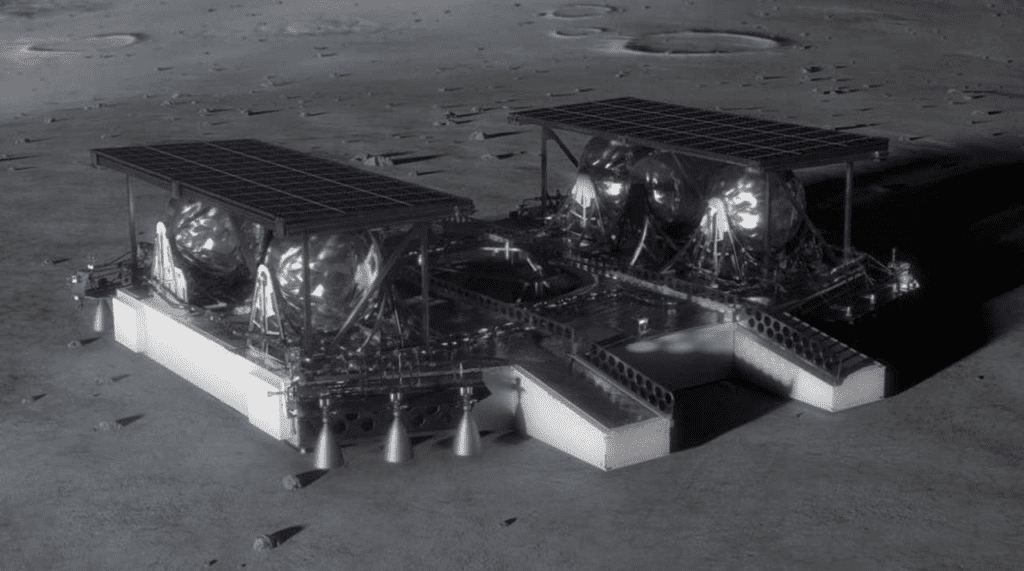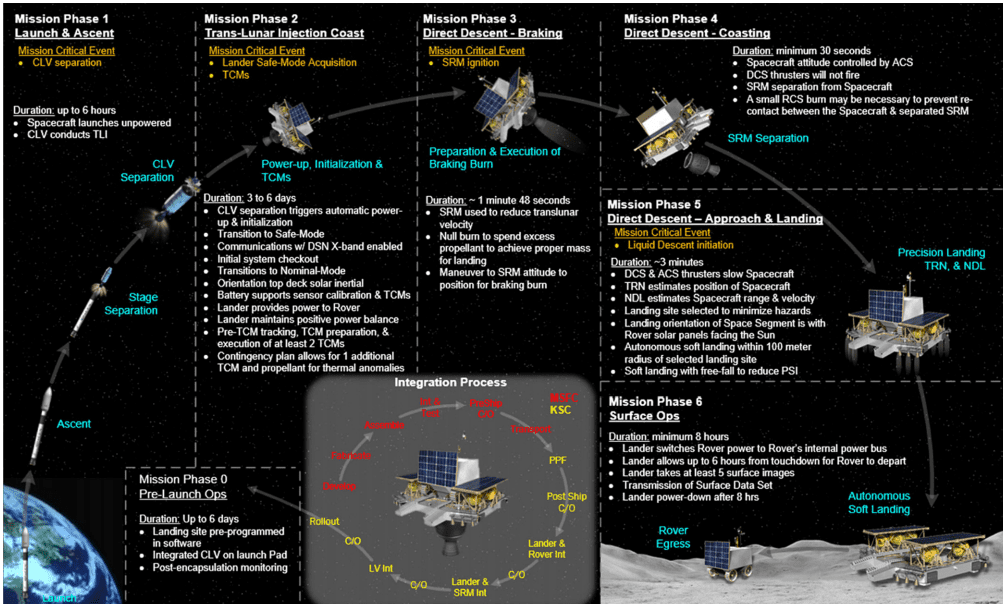
NASA is moving fast on its plan to return to the lunar surface by 2024 and establish a presence there. The United States space agency just revealed the idea of what the new moon lander would look like – a design that would be able to explore the polar regions of the moon.
The concept was created with the objective of being simple and economic at the same time, according to NASA’s technical description. The lander would be able to carry a 300-kilogram (661 lbs) rover and payload to the moon’s surface but it would not survive the lunar night. NASA also presented its detailed plans (including the nuts and bolts of the lander) in a technical PDF which you can access here.
“We used single string systems, minimal mechanisms and existing technology to reduce complexity, though advancements in precision landing were planned to avoid hazards and to benefit rover operations,” said Logan Kennedy, the project’s lead systems engineer.

With the development of the moon lander, NASA aims at having a “sustainable human presence” on the moon by 2028, for which many missions will be needed. The agency aims at making new scientific discoveries, demonstrating new tech breakthroughs and build a lunar economy – with the help of private companies.
“As robotic lunar landers grow to accommodate larger payloads, simple but high-performing landers with a contiguous payload volume will be needed,” Kennedy said. “This concept was developed by a diverse team of people over many years and meets that need. We hope that other lander designers can benefit from our work.”
US President Donald Trump asked NASA to land American astronauts on the moon by 2024, a directive in which the space agency is already working on. NASA hopes to work with US companies to design new reusable systems to land astronauts on the lunar surface, first testing human-class landers and then sending a crew in 2028.
Trump’s policy calls to “lead an innovative and sustainable program of exploration with commercial and international partners to enable human expansion across the solar system” – placing efforts on organizing the work of the government, private industry, and other countries to return humans to the moon.
When going to the moon, NASA claims it will be laying the ground for potential human exploration of mars. The moon will be the proving ground to test new technologies and resources that could then take humans to Mars, including using a sustainable architecture.






